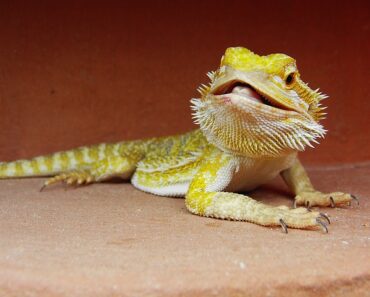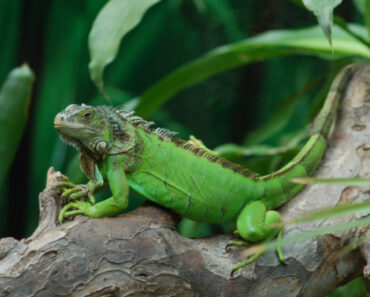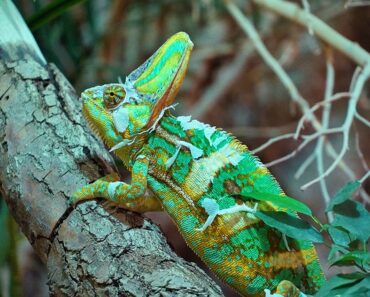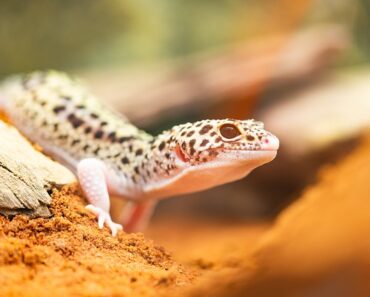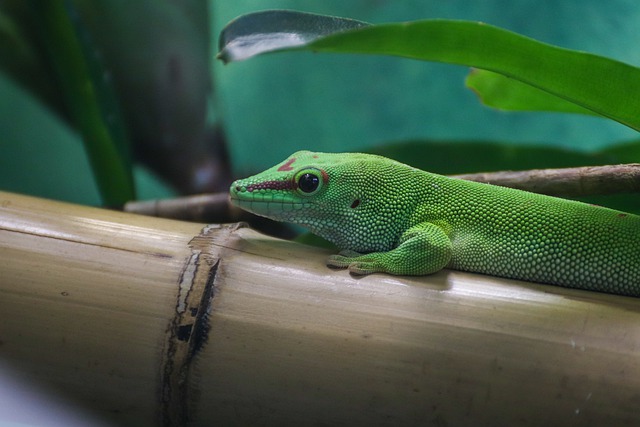
In nature, sunlight allows the life of reptiles which need this solar energy every day for its warmth and beneficial rays. When breeding reptiles in captivity, it is necessary to reproduce this environment as close as possible to reality in order to offer the animals good living conditions. UVB rays are one of the essential factors for keeping reptiles in captivity, that’s why we use specific lighting that will be selected according to the species bred. It will be necessary to verify the efficiency of your installation by measuring the temperature but also the UVB index.
What are the benefits of UVB?
Ultraviolet rays have several actions on the health and behavior of reptiles. To keep your animals alive it will be essential to install lighting that will bring artificial UVB to your reptile farm.
UVB rays allow reptiles to synthesize vitamin D3. This vitamin is an element that allows reptiles to metabolize calcium in order to ensure the development of bones. Vitamin D3 is completely absent from the diet of reptiles, whether they are insectivorous or vegetarian. If a reptile lacks calcium it is very likely that it will develop metabolic diseases of the bones as well as the skin and the animal will not be able to develop properly especially if it is in the growth phase. Reptiles with a carapace such as water turtles or land turtles need vitamin D3 to develop a strong and resistant carapace. Depending on the reptile species and the size of your terrarium, you will need to choose more or less powerful lighting and determine its UVB emission capacity.
These UVB rays also have an essential role on the immune system of the reptiles’ skin. They also allow the production of endorphins that contribute to the animals’ well-being. In addition to the direct effect on the health of reptiles, this factor promotes their growth and reproduction.
How does UVB transform into vitamin D3?
In order for vitamin D3 to be synthesized reptiles need on the one hand the ultraviolet light of UVB and on the other hand heat. It is then in the skin of the reptile that the conversion of the cholesterol level into pre-vitamin D3 takes place. With the action of heat, pre-vitamin D3 is converted into vitamin D3.
This phenomenon is called skin photo-conversion of vitamin D3. There are vitamin D3 supplements that can be given to reptiles by adding them to the diet, but these products must be dosed precisely so as not to cause an overdose of vitamin D to the reptiles. Indeed in too great quantity this vitamin is toxic. By themselves my reptiles generate the right dose of vitamin D3. This is why it is preferable to maintain a healthy metabolism in your reptiles by allowing them to synthesize vitamin D naturally by licking. Too low a dose of vitamins leads to health risks for the animal causing metabolic diseases.
What type of lighting should I choose?
You will have the choice between fluorescent tubes or energy-efficient lamps. For reptiles such as lizards and turtles you need a UVB emission of 5 to 10%. The ideal will then be an energy-efficient lamp corresponding to this power.
A fluorescent tube would not be sufficient in this type of terrarium. For reptiles such as snakes and amphibians the UVB emission power is less important, it represents 2% UVB.
You will be able to equip yourself with energy saving lamps or fluorescent tubes corresponding to this power by favoring the energy saving lamp in case of a large terrarium.
Be careful not to install a lamp too powerful which would not be healthy either for the health of reptiles. Excess UVB rays are harmful to the eyes and skin of reptiles. It is necessary to determine the animals’ needs and to adapt the installation to your terrarium. Some lamps will give you a beautiful white light while others will emit a faint violet light. This choice will depend on your preferences as a user. The main drawback of energy-efficient lamps is the difficulty to place them at a good distance from the animals, whereas fluorescent tubes are easier to install, simple to adjust and are more stable.
How to install its lights to get the most out of their capacity?
Most of the time the lights are installed above the terrarium with a grid to protect the animals from accidental burns. It is important to know that this type of installation slows down about 50% of the UV rays that will be partially absorbed by the grid. To overcome this problem it is necessary to invest in a high-performance lamp. The second element to consider is the reduction of UV depending on the distance between the lamp and the ground. The more the distance increases, the more the UV emission decreases.
The solution is found in the interior design of the terrarium by placing for example rocks and determining several locations where your reptiles will stand with several exposure areas. The animals will be able to choose the most suitable locations according to their needs at different times of the day. In order to have a precise idea of the distribution of UV indices within the terrarium it will be necessary to take measurements in several locations as the rate can vary from one place to another.
How to evaluate the amount of UVB in your terrarium?
To measure the amount of UVB present in your terrarium you can buy UV index sensors. These measuring devices will allow you to evaluate the percentage of UVB beneficial to reptiles in the terrarium. However, it is preferable to invest in good quality equipment that can measure the rays emitted by artificial lighting. To know the maximum UV index appropriate for the species you are breeding you will have to refer to its needs in the wild. Reptiles that naturally tend to sunbathe early in the morning and late in the evening have lower UVB requirements than species that expose themselves to late morning tropical sunlight. Desert species will have higher UVB radiation and heat requirements than tropical species.

